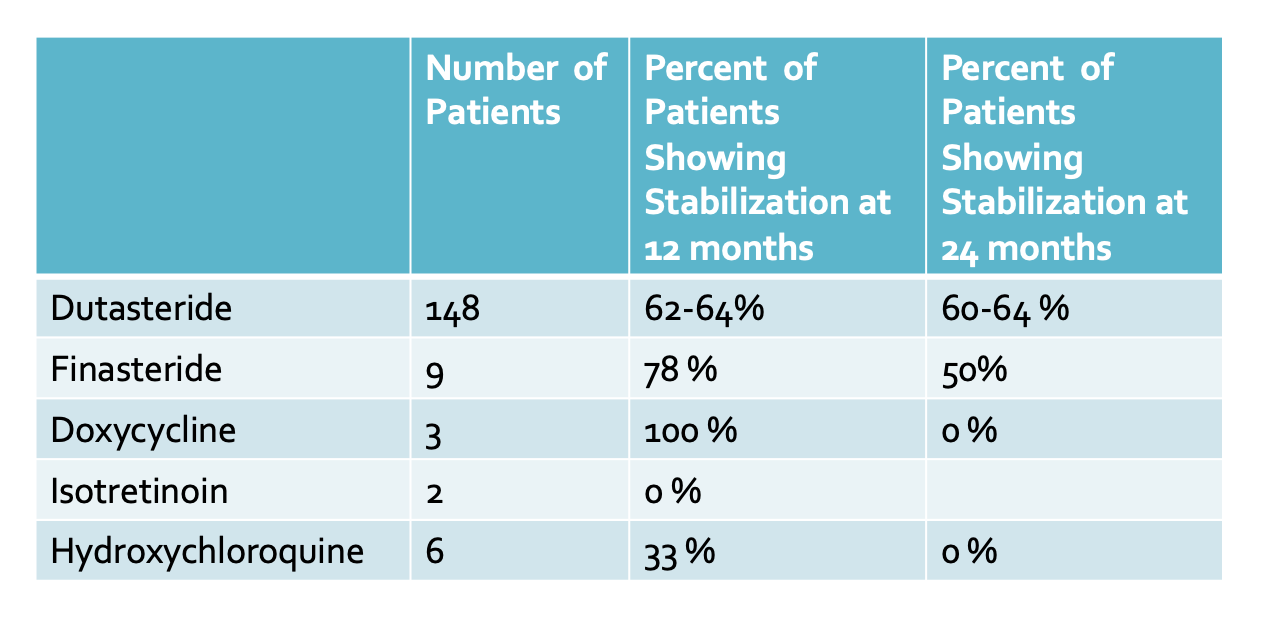Dutasteride for Treating Frontal Fibrosing Alopecia (FFA): It is the gold medalist for now
Daily Dutasteride Top the List as the Most Effective Treatment for Frontal Fibrosing Alopecia
Since 2014, oral finasteride and oral dutasteride have held the top spot as the most effective treatments for frontal fibrosing alopecia in post menopausal women. It’s likely that the data is similar for premenopausal women and perhaps even men who have FFA, but the most robust data is for post menopausal women with FFA.
I like to think of the treatments for FFA in terms of first-line, second-line and third-line options, which I sometime refer to as gold, silver and bronze medal options.
I really like thinking of treatment options as gold, silver and bronze because just like the Olympics it reminds me that these options won’t aways be the gold, silver and bronze medal options. New treatment will come and old treatments will go in the same way that new promising athletes will come up the ranks to replace current ones that are growing older. The podium will be occupied by new treatment in years to come as we learn more and more about the causes and mechanisms ofd these diseases.
A New Study Points to Dutasteride as Among the Best Treatment Option for Frontal Fibrosing Alopecia
A new study published in the Journal of the America Academy of Dermatology supports the notion that dutasteride is among the most effective treatment option we currently have for treating frontal fibrosing alopecia,. The study was small and only compared a limited number of patients who used other treatments like finasteride, doxycycline, isotretinoin and hydroxychloroquine (Plaquenil). Nevertheless, the message was that after 2 years of trying to stop the disease, no other treatment beat out dutasteride. Some treatments may put the breaks on the disease for a year or so, but benefits don’t seem to stay.
Dutasteride stops the disease and keeps it halted better than any other treatment we have now.
Conclusion and Summary
This is an important study for a few reasons. First, it’s a study. There is just so much non sense out there in the world of hair loss that we absolutely need good science to guide what we do in the hair loss clinic.
If we don’t have solid data on vitamins, PRP, laser, stem cell therapy and low dose naltrexone in treating FFA, then those treatments don’t deserve the spot as gold medalist. If you want to earn your spot in the hair loss treatment algorithms of the world, you need to have good, reliable, repeatable data to back you up.
New and exciting treatments are new and exciting … but guess what - they are not the first step in treating any hair loss condition.
I don't really care if doctor so and so likes using treatment X …. or clinic so and so uses treatment Y. Show me the data and I’ll decide myself if it’s actually good data and whether it warrants use for my precious patients.
This study by Pindado-Ortega and colleagues is one of those studies that serves to knock down a tiny bit of this nonsense in the world of treating hair loss. Sure, some of the comparative groups in the study are small. Every study has flaws but the biggest flaw we have in the hair loss community is endorsing treatments without good evidence.
Kudos to dutasteride for earning and keeping this spot as the top treatment for FFA. However, my hope is that its time as the gold medalist will be short lived and that new treatments for FFA take the center stage in the not too distance future. For now, the anthem of dutasteride plays loudly.
Reference
Pindado-Ortega et al. Effectiveness of dutasteride inn a large series of patients with frontal fibrosing alopecia inn real clinical practice. J Am Acad Dermatol. 2021; 84: 1285-1294.
This article was written by Dr. Jeff Donovan, a Canadian and US board certified dermatologist specializing exclusively in hair loss.


